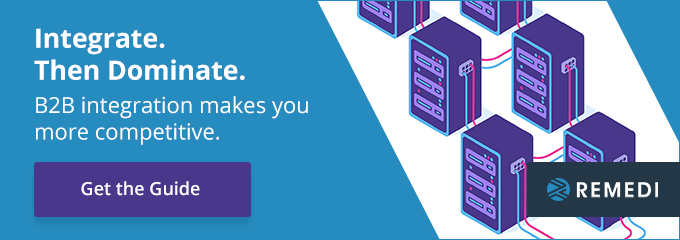
On many helicopters, a bolt, pin, or nut holds the rotors together. Helicopter pilots call it the “Jesus bolt,” because if something happens to it in flight, all you can do is pray. Your integration environment is the Jesus bolt of your company – critical business processes flow through this technology, and if something happens to it, major problems erupt.
Can you trust your integration environment? This article will explore what makes your integration solutions trustworthy and the impact unreliable integration environments have on your company.
Reliability in Integration Environments
Reliability in integration environments has several components:
- The integration environment functions the way it’s supposed to – there are no hiccups or errors
- Integration solutions consistently meet customer needs
- The integration environment makes it fast and straightforward to onboard partners
- The integration environment allows you the highest level of visibility possible, all the time

The Consequences of an Unreliable Integration Environment
To understand the impact of the integration environment, let’s look at the consequences of unreliable integration systems.
The most significant impact is financial: companies spend thousands of dollars a year dealing with tech hiccups, data errors, and SLA violations. According to Cleo’s The State of the Ecosystem and Application Integration Report, 30% of companies surveyed estimated they lost between $100,000 and $1 million per year for these reasons. Ten percent of companies said they lost at least $1 million because of unreliable integration systems.
“The biggest impact of unreliable integration systems is financial: they cost companies thousands of dollars a year.”
A second significant impact is that it’s difficult to do business with you. Almost half of all IT professionals say it can take over a month to onboard a new training partner. If that trading partner is a customer, you’re missing out on orders; if it’s a supplier, and it turns out that the supplier can’t deliver orders on time, you’ll have to find a new supplier and go through the same lengthy onboarding process.
Third, legacy integration systems don’t give you real-time visibility into your supply chain. Today, your trading partners are most likely across the world. Let’s say a major supplier’s factory shuts down. You’re left scrambling to find a replacement because your legacy EDI system couldn’t alert you.
What Can You Do to Increase Your Integration Environment’s Reliability?
Stop for a moment to think about how many SLA violations you’ve accrued due to your legacy integration system. Moreover, how long does it take to onboard trading partners? Finally, are you reacting to supply chain problems because you don’t have real-time visibility?
Modern integration solutions offer reliability and consistency, so you avoid SLA violations and data errors. In addition, they shorten onboarding time while delivering real-time visibility into your supply chain.
“Modern integration solutions deliver reliability and consistency.”
If your current integration system can’t handle the challenges of today’s business environment, you’ll find your proverbial rotors flying off midflight. With a modern integration environment, you have peace of mind with reliable, consistent integration processes. Integrate. Then Dominate.




